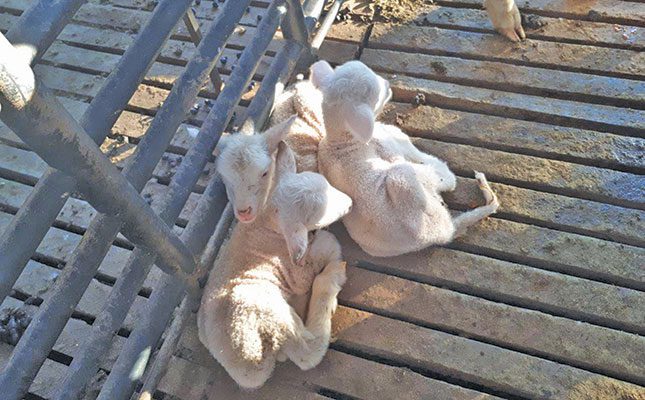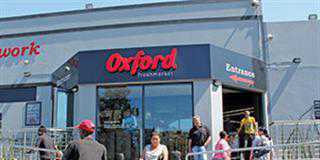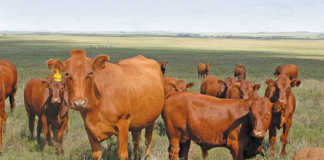
Photo: FW Archive
Tell us about Phend Pharmaceuticals.
South African company Phend Pharmaceuticals was founded by our CEO, Chris Vorster, in 1992. We research, develop, market and distribute a range of proprietary products, which are exported to 17 countries around the world.
Our specialities include quantum physics, nanotechnology (specifically used for the manufacturing of the disinfectant Peroxsil Ag+) and organic chemistry.
We focus on disinfection of agricultural and industrial operations, human wellness, aesthetic enhancement and longevity. All of the ingredients in our products are organic and eco-friendly.
What makes Peroxsil Ag+ unique?
The base ingredient in many cleaning and disinfecting products is chlorine, and while it is highly effective in killing pathogens and biofilms, it is also unstable, with changes in pH and temperature rendering it neutral. Chlorine is also harmful to the environment, and the gas released from chlorine is toxic to humans and animals.
Our product, Peroxsil Ag+, is a solution of hydrogen peroxide (H2O2) that is stabilised using proprietary ionic silver-based chemistry.
Peroxsil Ag+ is chlorine and alcohol free, with no corrosive effects on usual materials of construction during application. After use, it simply degrades into harmless water and oxygen.
Silver has an anti-senescence property that increases shelf life. Conventional disinfectants fail to protect against re-exposure to pathogens, but silver H2O2 guarantees a long-lasting protection from microbes all along the delivery chain. Considering all this, Peroxsil Ag+ could help farmers reduce their sky-high input costs as crop yield and animal performance would increase.
What are the benefits of Peroxsil Ag+?
It is a non-corrosive, eco-friendly product that can be used as a dip or spray, and is safe for consumption in the appropriate quantities. It has superb antiviral, antifungal and antibacterial properties, killing organisms in the air, water, soil, and on surfaces. It is also colourless, odourless and biodegradable.
In agriculture, Peroxsil Ag+ can be used in irrigation systems in controlled quantities, and is applied via sprinkler irrigation, surface irrigation, drip irrigation, sub-irrigation and manual irrigation.
Hydrogen peroxide has been in use since the 1870s, and is very unstable on its own. However, using silver as a stabiliser for H2O2 synthesis makes a big difference in the stability and longevity of the product.
Since the synthesis of silver H2O2 (AgH2O2+), it has been used in many industries outside of agriculture, including the food and beverage, healthcare, and sports and leisure industries, and for controlling legionella in portable water systems. The nanosilver particles used are tiny, about one-billionth of a metre. Their size enables them get into places that other larger particles can’t.
The Ag helps to penetrate the cell walls of the pathogen, causing changes to its DNA, which stops it reproducing and eventually kills it off.
And since it is such an effective disinfectant, it has also been shown to reduce the need for antibiotics in herds and flocks.
Why should the South African agriculture sector use Peroxsil Ag+?
The US and EU, two of South Africa’s major trading partners, are placing restrictions on the use of chlorine to wash fresh produce before it is exported.
Even local retailers are beginning to clamp down on their growers when it comes to the use of chlorine. Thus, farmers and packhouses are looking for alternatives to chlorine; Peroxsil Ag+ is the alternative.
However, price remains a problem. Farmers are already under severe financial pressure because of the rise in input costs, but they should see AgH2O2+ as an investment. While the initial cost may be higher than that of chlorine, the volume of AgH2O2+ required will decrease after the first use.
They should also bear in mind that local and international legislation could possibly change in the near future, banning the use of chlorine-based products.
Can you tells us about some of the farmers who have had good results from using Peroxsil Ag+?
I will share three of the many cases with you. The Groote Post Winery in Darling (Western Cape) grows wine grapes, but also runs a flock of around 1 000 sheep. All these sheep are artificially inseminated and run in strict planned breeding seasons.
However, over the years, the farm has noticed that the lamb mortality rate was high at around 40% to 50%, with lambs dying from cryptosporidiosis. Infection usually occurs in lambs one to four weeks old, but can occur up to three months of age.
Outbreaks are likely to be seen in intensive conditions such as lambing pens and ’kraaling’ at night, and is the result of effluent entering river and water systems and ending up on irrigated pastures or in the drinking water of livestock. We thus decided to investigate the farm’s water source, and sent water samples to be independently tested. It turned out that the water had high concentration levels of E. coli.
The birthing pens was therefore being washed down with contaminated water. The lambs would then come into contact with the contaminated water in their drinking troughs and become sick. We initiated a trial in which we sprayed down the pens with Peroxsil Ag+ twice a day; the ewes were also sprayed with diluted quantities.
The ewes and lambs also received water sanitised with Peroxsil Ag+. In the first two months of using Peroxsil Ag+ in this way, the farm didn’t suffer one fatality to cryptosporidiosis.
We have also worked with A&J Farms in Johannesburg, which supplies potatoes, carrots and lettuces to various large retailers. They found that many pockets of potatoes were being returned to them after a couple of weeks due to the produce either rotting or growing stems.
They started washing their post-harvest potatoes with Peroxsil Ag+, and now save around R21 million/year in costs.
We are also currently running a trial on one of South Africa’s biggest broiler producers.
Poor water quality impacts bird performance and health, increasing mortality and production costs.
Given this, we were given permission to study the effect of Peroxsil Ag+ on water with fluctuating pH levels, broiler weight gain, feed conversion, reduced mortality, and overall flock performance.
For the purpose of the trial, we use Peroxsil Ag+ in the drinking water from the beginning to the end of each growing cycle. Water quality tests are conducted twice a week to ensure that the drinking lines are free from microbial contamination that could potentially cause disease.
Biofilm (algae) is a big problem in the broiler industry, and chlorine is usually used to control the problem. However, despite using chlorine to control biofilm on the site, the problem persists. However, since the introduction of
Peroxsil Ag+ the proliferation of the biofilms has been eliminated completely. We use Peroxsil Ag+ to shock the entire water system and tanks, and birds are supplied with human-grade drinking water from placement to catching. Over the first three of six cycles, mortalities are down, chloroform levels have dropped from millions to tens, weight gain has improved and feed conversion shows potential.
We are also working with the Dairy Standard Agency to improve the shelf life of UHT long-life milk. By using Peroxsil Ag+ as an improver in the milk, we have managed to increase the best-before date by 26 days.
Unfortunately, though, unlike some other countries, South Africa doesn’t permit the use of additives in pasteurised milk. We hope this legislation will eventually be changed to allow for this, as people without refrigerators need dairy products with longer shelf lives.
Where do you see Peroxsil Ag+ in the next five to 10 years?
We want to gain more traction on the market in many industries over the next five years. We hope to grow awareness of the long-term benefits of Peroxsil Ag+, as we truly believe that it will save farmers and processors money in the long run.
Email Douglas Spinas at [email protected].











